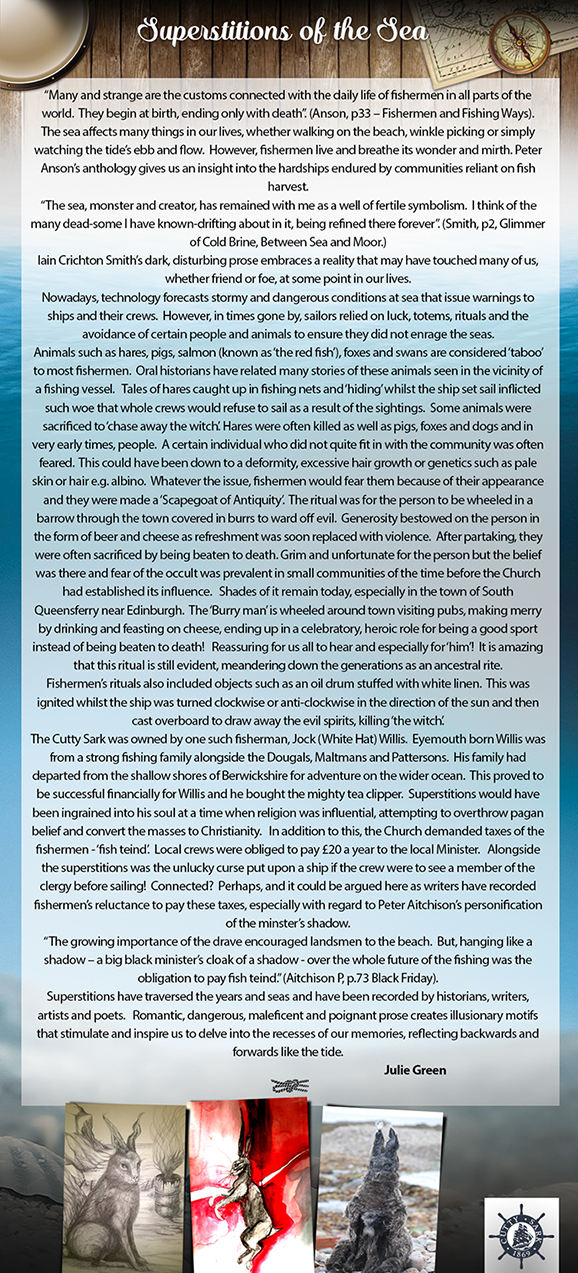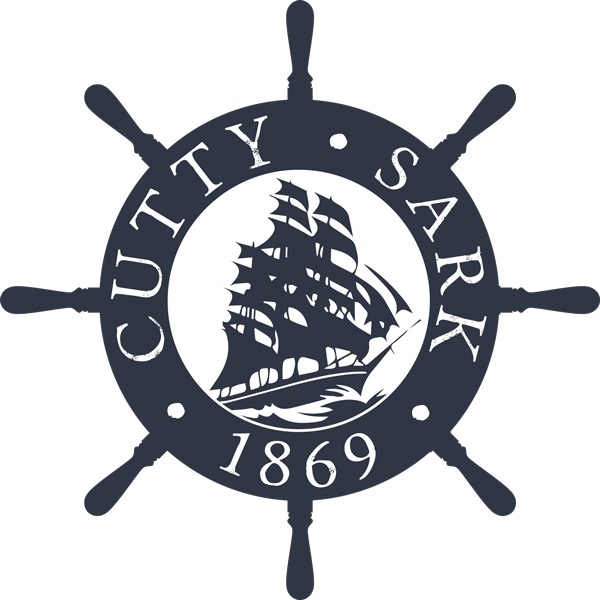Superstitions of the Sea, Art Gallery

“Many and strange are the customs connected with the daily life of fishermen in all parts of the world. They begin at birth, ending only with death”. (Anson, p33 – Fishermen and Fishing Ways).
The sea affects many things in our lives, whether walking on the beach, winkle picking or simply watching the tide’s ebb and flow.
However, fishermen live and breathe its wonder and mirth. Peter Anson’s anthology gives us an insight into the hardships endured by communities reliant on fish harvest.
“The sea, monster and creator, has remained with me as a well of fertile symbolism. I think of the many dead-some I have known-drifting about in it, being refined there forever”. (Smith, p2, Glimmer of Cold Brine, Between Sea and Moor.)
Iain Crichton Smith’s dark, disturbing prose embraces a reality that may have touched many of us, whether friend or foe, at some point in our lives.
Nowadays, technology forecasts stormy and dangerous conditions at sea that issue warnings to ships and their crews. However, in times gone by, sailors relied on luck, totems, rituals and the avoidance of certain people and animals to ensure they did not enrage the seas.
Animals such as hares, pigs, salmon (known as ‘the red fish’), foxes and swans are considered ‘taboo’ to most fishermen. Oral historians have related many stories of these animals seen in the vicinity of a fishing vessel.
Tales of hares caught up in fishing nets and ‘hiding’ whilst the ship set sail inflicted such woe that whole crews would refuse to sail as a result of the sightings. Some animals were sacrificed to ‘chase away the witch’. Hares were often killed as well as pigs, foxes and dogs and in very early times, people.
A certain individual who did not quite fit in with the community was often feared. This could have been down to a deformity, excessive hair growth or genetics such as pale skin or hair e.g. albino.
Whatever the issue, fishermen would fear them because of their appearance and they were made a ‘Scapegoat of Antiquity’. The ritual was for the person to be wheeled in a barrow through the town covered in burrs to ward off evil.
Generosity bestowed on the person in the form of beer and cheese as refreshment was soon replaced with violence.
After partaking, they were often sacrificed by being beaten to death. Grim and unfortunate for the person but the belief was there and fear of the occult was prevalent in small communities of the time before the Church had established its influence. Shades of it remain today, especially in the town of South Queensferry near Edinburgh.
The ‘Burry man’ is wheeled around town visiting pubs, making merry by drinking and feasting on cheese, ending up in a celebratory, heroic role for being a good sport instead of being beaten to death! Reassuring for us all to hear and especially for ‘him’!
It is amazing that this ritual is still evident, meandering down the generations as an ancestral rite.
Fishermen’s rituals also included objects such as an oil drum stuffed with white linen. This was ignited whilst the ship was turned clockwise or anti-clockwise in the direction of the sun and then cast overboard to draw away the evil spirits, killing ‘the witch’.
The Cutty Sark was owned by one such fisherman, Jock (White Hat) Willis. Eyemouth born Willis was from a strong fishing family alongside the Dougals, Maltmans and Pattersons.
His family had departed from the shallow shores of Berwickshire for adventure on the wider ocean. This proved to be successful financially for Willis and he bought the mighty tea clipper.
Superstitions would have been ingrained into his soul at a time when religion was influential, attempting to overthrow pagan belief and convert the masses to Christianity. In addition to this, the Church demanded taxes of the fishermen – ‘fish teind’.
Local crews were obliged to pay £20 a year to the local Minister. Alongside the superstitions was the unlucky curse put upon a ship if the crew were to see a member of the clergy before sailing! Connected? Perhaps, and it could be argued here as writers have recorded fishermen’s reluctance to pay these taxes, especially with regard to Peter Aitchison’s personification of the minster’s shadow.
“The growing importance of the drave encouraged landsmen to the beach. But, hanging like a shadow – a big black minister’s cloak of a shadow – over the whole future of the fishing was the obligation to pay fish teind.” (Aitchison P, p.73 Black Friday).
Superstitions have traversed the years and seas and have been recorded by historians, writers, artists and poets.
Romantic, dangerous, maleficent and poignant prose creates illusionary motifs that stimulate and inspire us to delve into the recesses of our memories, reflecting backwards and forwards like the tide.
by Julie Green
Thesis by Julie Green: Myth and Superstition Click Here
Listen to the haunting instrumental of The Selkie, the mythical sea creature which lures sailors to their doom.







